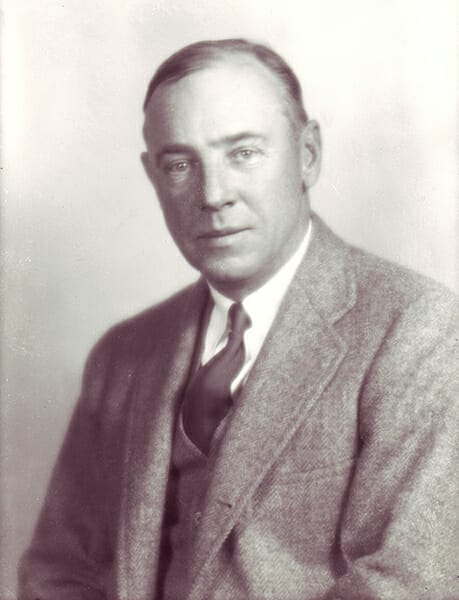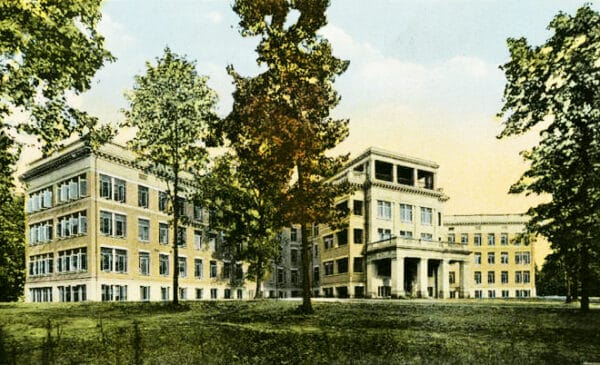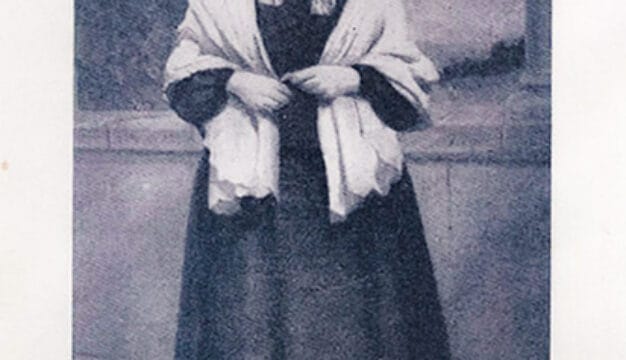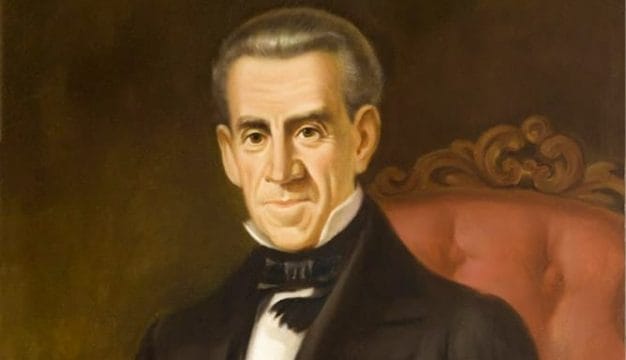Lloyd Noland
 Lloyd Noland
Physician Lloyd Noland (1880-1949) served with Alabamian general William C. Gorgas in the Panama Canal Zone and aided the effort to control mosquitos that carried yellow fever and malaria and thus impeded construction of the canal. After returning from the Canal Zone, Noland had a long career with the Tennessee Coal, Iron, and Railroad Company (TCI) in the Birmingham District, where he worked to improve public health, sanitation, and medical care among the company’s employees and their families.
Lloyd Noland
Physician Lloyd Noland (1880-1949) served with Alabamian general William C. Gorgas in the Panama Canal Zone and aided the effort to control mosquitos that carried yellow fever and malaria and thus impeded construction of the canal. After returning from the Canal Zone, Noland had a long career with the Tennessee Coal, Iron, and Railroad Company (TCI) in the Birmingham District, where he worked to improve public health, sanitation, and medical care among the company’s employees and their families.
Noland was born on July 25, 1880, in Gordonsville, Virginia, to Cuthbert Powell and Rosalie Haxall Noland; he was the oldest of seven children. His father was a civil engineer who worked for the Baltimore & Ohio Railroad. After graduating from a high school in Washington, D.C., Noland enrolled in the Baltimore Medical College, which later became a part of the University of Maryland. He played football and ran track in college.
Noland received his medical degree in 1903 and then spent a year as an intern at Maryland General Hospital and a brief period in private practice in Virginia. In July 1904, he joined the first group of physicians traveling to Panama as part of the American Medical Mission, directed by General Gorgas, who had achieved success in Cuba in controlling malaria and yellow fever. At first, Noland worked in the former French Canal Company’s Ancón Hospital (now Gorgas Hospital), but soon he was appointed to Gorgas’s health and sanitation program. By 1905, he was chief surgeon at Colón Hospital, another former French facility in Panama, and held that position until 1913. While in Panama, Noland met Margaret Gillick, who was in charge of the clerical staff at Colón Hospital. They were married in November 1907; the couple had no children.
The years in Panama provided Noland with skills he would need in Alabama, including knowledge of many medical conditions and situations he would not have seen anywhere else, as well as the ability to overcome the organizational problems of the public health effort in the Canal Zone. Especially in the early years of canal construction, federal officials provided poor financial and other support, but Gorgas and his team managed to work around such obstacles.
 Tennessee Coal, Iron & Railroad Co.
In 1912, George Gordon Crawford, president of a TCI subsidiary that had operated in Jefferson County since 1886, travelled to Panama to offer Noland the post of superintendent of its health department. After a 1913 visit to the large coal fields in the Birmingham area owned by TCI, Noland accepted. The mine and mill areas of Jefferson County were as infested with mosquitos as Panama, and Noland found many other problems as well. Employee turnover was extremely high because of the poor living conditions and prevalence of diseases to which workers and their families were exposed. Neither clean water nor a proper sewer system was available. As a result, typhoid, smallpox, hookworm, dysentery, and enteritis were common. Noland attacked these problems with ambitious plans despite skepticism from some company officials, employees, and even members of the medical profession. After receiving approval from the Medical Association of the State of Alabama, Noland began to eradicate sources of stagnant water to eliminate mosquito breeding grounds. He also opened clinics in the mine villages and began an employee education program that taught improved sanitation practices.
Tennessee Coal, Iron & Railroad Co.
In 1912, George Gordon Crawford, president of a TCI subsidiary that had operated in Jefferson County since 1886, travelled to Panama to offer Noland the post of superintendent of its health department. After a 1913 visit to the large coal fields in the Birmingham area owned by TCI, Noland accepted. The mine and mill areas of Jefferson County were as infested with mosquitos as Panama, and Noland found many other problems as well. Employee turnover was extremely high because of the poor living conditions and prevalence of diseases to which workers and their families were exposed. Neither clean water nor a proper sewer system was available. As a result, typhoid, smallpox, hookworm, dysentery, and enteritis were common. Noland attacked these problems with ambitious plans despite skepticism from some company officials, employees, and even members of the medical profession. After receiving approval from the Medical Association of the State of Alabama, Noland began to eradicate sources of stagnant water to eliminate mosquito breeding grounds. He also opened clinics in the mine villages and began an employee education program that taught improved sanitation practices.
TCI, by then a part of U.S. Steel, committed $750,000, a huge sum at the time, to his plans. Noland quickly produced results. Within a year, malaria cases dropped from 4,800 to 370. Noland recruited and hired an initial group of 35 doctors and 15 nurses for the health department. In 1914, these medical professionals handled more than 129,000 patient visits to the clinics and made more than 84,000 home visits. In addition, a central laboratory tested water supplies, milk, and foods.
 Employees Hospital
In 1916, the Rockefeller Institute for Medical Research in New York City recruited Noland and physician William Sherman of Pittsburgh to make a trip to France to study advanced wound care during World War I. This knowledge in turn enabled Noland and his employees to treat a variety of the serious injuries often suffered by miners and mill workers.
Employees Hospital
In 1916, the Rockefeller Institute for Medical Research in New York City recruited Noland and physician William Sherman of Pittsburgh to make a trip to France to study advanced wound care during World War I. This knowledge in turn enabled Noland and his employees to treat a variety of the serious injuries often suffered by miners and mill workers.
Noland used his successes to persuade his employer to build the permanent 350-bed Employees Hospital, which opened in November 1919 in Fairfield. Noland held the joint positions of medical director and chief surgeon at the hospital. Despite these responsibilities, he also served as an officer in a number of medical societies, including the presidency of the Medical Association of the State of Alabama in 1936 and the Southern Surgical Association in 1938. His presidential address for the latter group was titled “The Panama Adventure.”
Noland died on November 27, 1949; his body was cremated and the ashes interred at the Sharon Cemetery in Middleburg, Virginia. The Employees Hospital was renamed the Lloyd Noland Hospital after his death. Before the four-year Medical College of Alabama opened in Birmingham in 1946, Noland’s hospital was an important educational institution for newly minted physicians and nurses in Alabama. Separate nursing schools for white and black women operated there from 1919 until 1931, and more than 360 interns and resident physicians had trained at the facility by 1958. Many of these individuals remained in Alabama to practice medicine or nursing. In 1951, a foundation took over its operation. After passing through several owners over the years, the hospital closed in 2004 and was demolished in 2009.
Additional Resources
Smith, Anita. Lloyd Noland, M.D.: The Boss. Fairfield, Ala.: Lloyd Noland Foundation, 1986.
Smith, Anita. Lloyd Noland Hospital: The Legacy. Fairfield, Ala.: Lloyd Noland Foundation, 1986.



